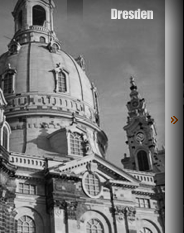
|

|

|

|

|
 9-11 Archive 2005
9-11 Archive 2005 The Rewriting of the History of 9-11
The Rewriting of the History of 9-11

The Rewriting of the History of 9-11March 24, 2005 The government has confiscated crucial evidence from the terror attacks of 9-11 while news reports that contradict the official version have been removed from public news archives. When a major catastrophe occurs it is important to monitor the first news reports because they often describe a very different version of events than the reports written after government spin doctors have gotten their fingers into the story. The early reports, more candid and honest than those that follow, need to be preserved for the historical record. The reports from journalists, photographs, videos, and eyewitness accounts from 9-11 are evidence and historical documents of the terror attacks that changed history. To remove, withhold, or delete documents from the historical record is illegal - and a crime against history. From the day of the attacks, however, agents of the U.S. government have confiscated, withheld, and destroyed crucial evidence and documents of the events in New York and Washington. As the Washington Times reported on September 21, 2001: "A security camera atop a hotel close to the Pentagon may have captured dramatic footage of the hijacked Boeing 757 airliner as it slammed into the western wall of the Pentagon. Hotel employees sat watching the film in shock and horror several times before the FBI confiscated the video as part of its investigation. "It may be the only available video of the attack. The Pentagon has told broadcast news reporters that its security cameras did not capture the crash," the Times reported. While this video and another confiscated from a nearby gas station are crucial evidence of the attack on the Pentagon, the government has withheld them. Why has the government confiscated and withheld these videos from the official investigators and the public? The withholding of this evidence suggests they contain evidence that contradicts the official version of events. There are at least two news reports from 9-11, which contradict the official version. Both have been removed from the historical record. The two reports, one from the Associated Press (AP) and one from the Albuquerque Journal, have been effectively excised from the publicly accessible historiography of 9-11. FLIGHT 93 LANDED IN CLEVELAND The first, an AP wire story, was "copied, pasted, and posted" on the website of Cincinnati's WCPO-TV at 11:43 a.m. (ET) on September 11, 2001, by Liz Foreman. The AP report said that United Airlines Flight 93 had landed in Cleveland. This is a news report about the flight that supposedly crashed in a reclaimed mine near Shanksville, Penn. at 10:06 a.m. (ET) Foreman told me that she had taken the story directly from the AP wire service: A Boeing 767 out of Boston made an emergency landing Tuesday at Cleveland Hopkins International Airport due to concerns that it may have a bomb aboard, said Mayor Michael R. White. White said the plane had been moved to a secure area of the airport, and was evacuated. United identified the plane as Flight 93. The airline did say [sic] how many people were aboard the flight. United said it was also 'deeply concerned' about another flight, Flight 175, a Boeing 767, which was bound from Boston to Los Angeles. On behalf of the airline CEO James Goodwin said: 'The thoughts of everyone at United are with the passengers and crew of these flights. Our prayers are also with everyone on the ground who may have been involved. United is working with all the relevant authorities, including the FBI, to obtain further information on these flights,' he said. This report of 147 words, which can still be found at the station's archives, has been purged from the historical record. The story's original location on WCPO's website brings up a page with the title, but no story. This is what one finds today: Plane Lands In Cleveland; Bomb Feared Aboard "This story has been removed from WCPO.com. It was a preliminary AP story, and was factually incorrect." A seemingly well-documented AP story quoting senior United Airlines personnel and the mayor of Cleveland about the landing of one of the four planes involved in 9-11 was deleted from the historical record because it was deemed to be "factually incorrect?" And who decided that? Foreman told me that the story remained on WCPO's website until "a year and a half ago" when it was removed after a radio talk show brought attention to it. "The government did not call me up," Foreman said. "It did not go on the air." Why was WCPO the only website that picked up the AP story? I asked Connie Mabin, AP's Cleveland bureau chief, if the story had originated at her office. "It preceded me," Mabin said, "I've only been here a couple years." A written request about the story sent to AP's New York headquarters had not been answered by press time. EXPLOSIVES IN THE TOWERS A second story that was kept out of the public archives was written on September 11, 2001, by veteran journalist Olivier Uyttebrouck of the Albuquerque Journal. The story appeared on the second page of the Journal's 9-11 extra edition. The story was based on a telephone conversation with Van Romero, an explosives expert and former director of the Energetic Materials Research & Testing Center (EMRTC), the "bomb school" at New Mexico Tech (NMT). "EMRTC studies explosions," its website says. "About 100 staff workers and 20 students study explosive materials and the effects of explosions on structures of all kinds." "At its core," Uyttebrouck later wrote, "Tech is as much a federal work site as a university. Not only does much of its research money come from the Department of Defense, one in 10 Tech graduates takes a job at one of the state's nuclear labs: Sandia or Los Alamos national laboratories. "The Defense Department pays for 37 percent of Tech's research funding; the Department of Energy, 20 percent; the National Science Foundation, 14 percent; and the remainder is from other sources," he wrote. Van Romero spoke with Uyttebrouck shortly after the twin towers collapsed. Uyttebrouck wrote on 9-11: Televised images of the attacks on the World Trade Center suggest that explosives devices caused the collapse of both towers, a New Mexico Tech explosion expert said Tuesday. The collapse of the buildings appears 'too methodical' to be a chance result of airplanes colliding with the structures, said Van Romero, vice president for research at New Mexico Institute of Mining and Technology. 'My opinion is, based on the videotapes, that after the airplanes hit the World Trade Center there were some explosive devices inside the buildings that caused the towers to collapse,' Romero said. The article was published on-line under the title "Explosives Planted in towers, N.M. Tech Expert Says." An archivist at the paper told me that the print article was titled "Use of explosives believed" and ran on page A2 in an extra edition on September 11, 2001. The extra edition of the paper was archived in the usual manner, according to Judy Pence, librarian for Journal. The Uyttebrouck story, however, is not found in any of the public archives of news articles from September 11, 2001. I asked NewsBank, Inc. of Chester, Vermont, why the article does not appear in their data banks of news articles. "We checked with the Albuquerque Journal," Lisa Veysey of NewsBank wrote, "and learned the paper did not submit that article to the archive. We do not have control over the content in the online archive. The paper sends us the content to be archived and we have to archive exactly what they send. We can't add or remove any articles." Kent Walz, editor of the Albuquerque Journal, was unaware that the Uyttebrouck article is not in the national newspaper data banks. The article is in the Journal's archive, he said, which is accessible to subscribers. Walz told me that he had not withheld the story. The contents of the extra edition were sent to the archives as usual, Walz said. "I don't know of any instructions to the contrary." Immediately after the collapses, Romero said, "The collapse of the structures resembled those of controlled implosions used to demolish old structures. "'It would be difficult for something from the plane to trigger an event like that,' Romero said in a phone interview from Washington, D.C." "Romero said he and another Tech administrator were on a Washington-area subway when an airplane struck the Pentagon. He said he and Denny Peterson, vice president for administration and finance, were en route to an office building near the Pentagon to discuss defense-funded research programs at Tech." The article concluded: The detonation of bombs within the towers is consistent with a common terrorist strategy, Romero said. 'One of the things terrorist events are noted for is a diversionary attack and secondary device,' Romero said. Attackers detonate an initial, diversionary explosion that attracts emergency personnel to the scene, then detonate a second explosion, he said. Romero said that if his scenario is correct, the diversionary attack would have been the collision of the planes into the towers. "FIRE, NOT EXPLOSIVES" A search of NewsBank for articles from the Journal about the events of 9-11 does not find Uyttebrouck's article but yields a later article written by John Fleck dated September 21, 2001, titled "Fire, Not Extra Explosives, Doomed Buildings, Expert Says." In this article, Romero recants, without explanation, his earlier opinion: A New Mexico explosives expert says he now believes there were no explosives in the World Trade Center towers, contrary to comments he made the day of the Sept. 11 terrorist attack. 'Certainly the fire is what caused the building to fail,' said Van Romero, a vice president at the New Mexico Institute of Mining and Technology. The day of the attack, Romero told the Journal the towers' collapse, as seen in news videotapes, looked as though it had been triggered by carefully placed explosives. I wrote to Romero asking why he changed his opinion. He had not responded by press time. After 9-11, Romero received two prestigious presidential appointments, including an appointment to serve on the President's Advisory Commission on Education Excellence for Hispanic Americans. The commission was created by President George W. Bush on October 12, 2001. On January 2002, it was reported that Romero was appointed national chairman of the National Domestic Preparedness Consortium (NDPC). Romero, who works as a lobbyist for NMT was credited for procuring some $56 million for the school in 2003. Romero reportedly was "influential" in making his university "first in the nation" among institutions of higher education for receiving federal funds.
|
©2010 Christopher Bollyn | Sitemap | christopher@bollyn.com

